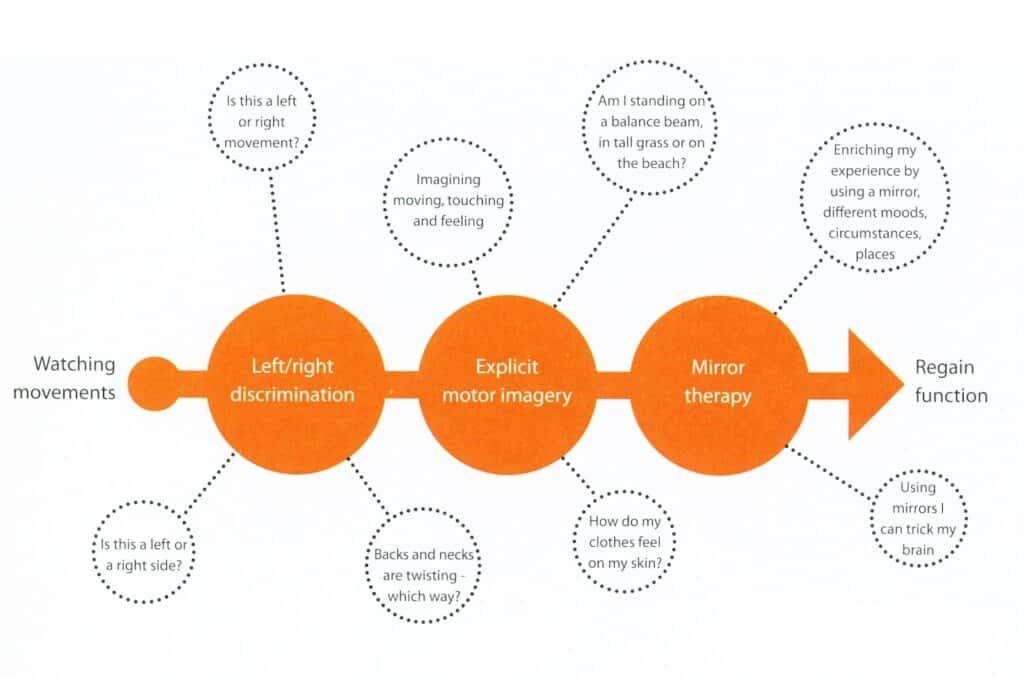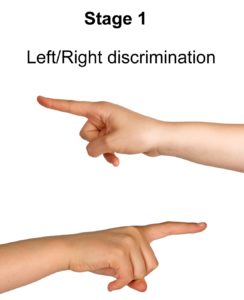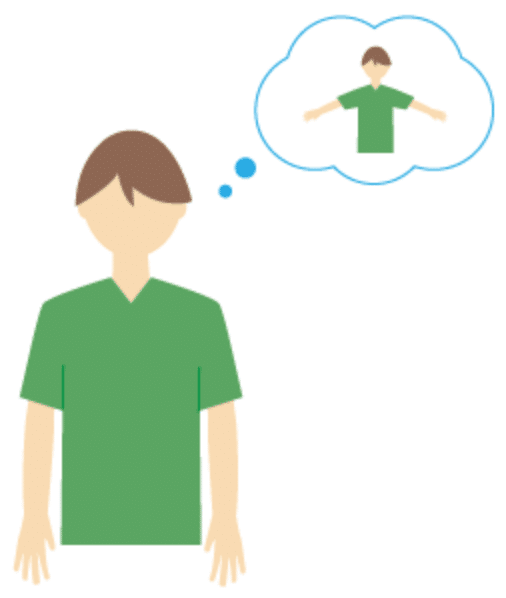Graded Motor Imagery – Getting Behind the Scenes of a Pain Problem
Graded motor imagery (GMI) aims to help complex pain and movement problems by working with your brain’s ability to be plastic and change (for the better). GMI therapy starts before your movement physically happens by exercising and recalibrating your brain in stages.
Those who have chronic orthopedic pain problems and have difficulty making gains with traditional therapy (manipulation and movement), might be candidates for GMI as it gets “behind the scenes” of a pain problem before you physically move. This means a finer look is taken into the details of what the brain has to do to move the body.

1st Stage – Left/Right Discrimination
Before movement begins, we first decide upon various elements of left/right discrimination.
Where in space do I intend to move?
With which side of my body engages with the environment?
Where in space is what I intend to move toward in relation to me?
We are not aware of left/right discrimination before movement, but this is what the brain does as it scopes our surroundings. Sort of as a pre-movement regimen.
Left/right discrimination helps identify one side of the body as distinct from the other, or if that part is moving to the left or to the right. This gets a little inaccurate or is slow for those in chronic pain, especially when it relates to the painful body part.

2nd Stage – Motor Imagery
The next stage of the GMI process is motor imagery. How we move is based on the concepts we already have about movement. Meaning, the movements we have been making all our lives in different situations add up to the various ways we express ourselves, sort of like our signature.
When one is in pain, and that pain is associated with movements that exacerbates it, the movements themselves are markers for the pain alarm to sound. In chronicity, this alarm can begin simply in the anticipation of those certain movements.
For example, someone who has chronic low back pain that is worsened when they bend forward, may find their pain increase simply by imaging themselves bending forward.
With any physical movement, an idea or concept of that movement already rests in the brain. With motor imagery, being that our attention is diverted from the actual physical movement and is centered on the imagined movements, any associated emotional, sensual, and psychological contexts we carry may begin to surface and show the other elements of ourselves tied to our physical behavior.
Motor imagery is a process of thinking about moving without actually moving at all. Imagined movements use similar brain regions as when actually moving. Injured athletes can use motor imagery to offset losses from inactivity, using the mental practice to aid the physical. We can even change in stages from imagining watching someone else move to imagining our own bodies move.

3rd Stage – Mirror Therapy
The final stage leads into physical movement with mirror therapy. This utilizes movements of the stronger part of your body, to ‘trick’ your brain into thinking the weaker part of your body is moving.
Most of the sensations we take in from the world are through vision. Visual confirmation enhances the movement process as you are a witness to your ability to improve and reshape how you contextualize your movements. Applying mirror therapy in varying contexts and degree of difficulty over time help the individual to regain function and reclaim their body.
Research has shown the effectiveness of graded motor imagery on CRPS, stroke patients, phantom limb pain, and other neurologically based phenomena.
GMI essentially rewires or smooths out the mental pre-movement cascade in the varying contexts in presents.
The great thing is that all of stages of GMI can be done at home! In person GMI sessions with your therapist are actually teaching lessons to support you in how to improve yourself.
Through the use of Recognise apps, imagination, and mindful movement, one can get ‘behind the scenes’ of a complex pain problem in the various ways it presents itself, and approach it from the point before it starts.
Please contact us with any questions!